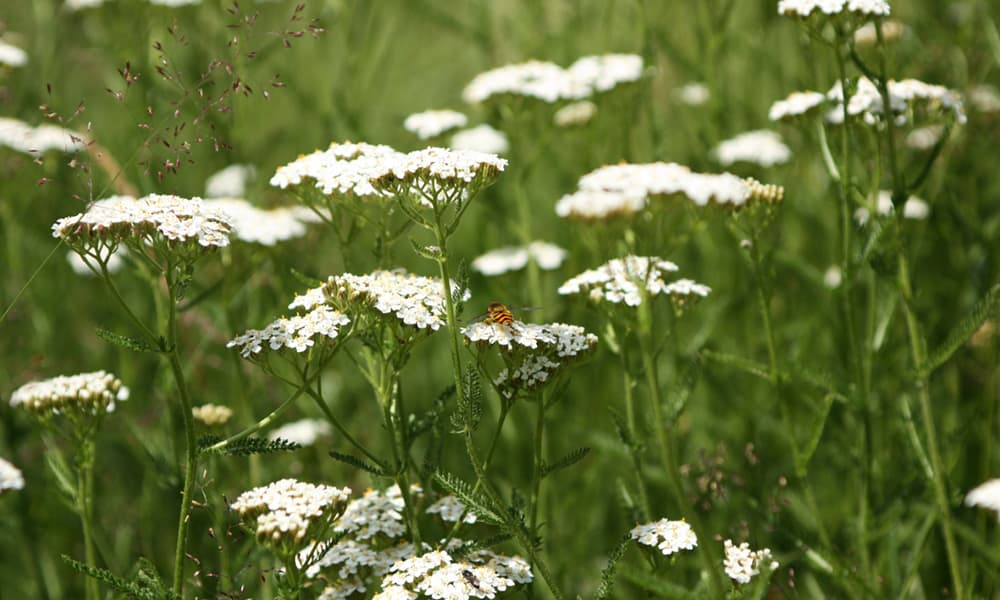News
Plant Relative: Yarrow (Achillea millefolium)
Yarrow has a long history of being used medicinally around the world, including by many First Nations and the ancient Greeks. This plant relative is one of our favourites to grow in our youth programs.

Yarrow has a long history of being used medicinally around the world, including by many First Nations and the ancient Greeks. They’re one of our favourites to grow in programs. We harvest yarrow to make into healing teas and salves.
Identification:
- Fern-like, feathery leaves with tiny hairs
- Develops miniature white, reddish or pink flowers, shaped like rounded or flat heads, and blooms from May to June.
Ecology:
- Yarrow can be propagated from seed or a cutting of the stem, and is a perennial plant which means that it can survive more than two years in the wild.
- It’s in the Asteraceae family, which is the same family as sunflower and dandelion
Where to Find them in BC: roadsides, rocky slopes, disturbed soils, waste places, low to high elevation
Bird and Pollinator Relationships:
- Flowers attract butterflies, ladybugs, hoverflies and small bees
Food & Medicine:
- As a tea, Yarrow can be used to treat cold and flu-like symptoms, as well as mouth pain including phlegm, sore throat, inflamed gums or toothaches. As a tea, yarrow also aid in digestion, lowers blood pressure increases circulation, regulates menstrual cycle and eliminates excess water from the body (like diuretic)
- Applied topically, Yarrow is styptic. It can be made into a spit poultice to help reduce bleeding and seal up wounds. It offers pain relief and antiseptic, antibacterial and anti-inflammatory properties, eliminating infection
- A yarrow poultice can also be used to relieve headaches, when applied directly to the forehead
- Young leaves can be eaten raw, ground as a herb or used to infuse vinegar
- Medicinal properties – Yarrow can be used in the treatment of rheumatism, toothache and sore throat.
- Yarrow is also known as Carpenter’s weed because carpenters often use it to stop the bleeding from the wounds and cuts from their work.
Traditional Use:
There are many different uses for yarrow: Haida: used yarrow as a poultice; Tsimshian as a sore throat gargle; Nuxalk as bronchitis medication; Nuu-chah-nulth as cold and cough medicine; Kwakwaka’wakw for a variety of purposes; Sechelt for colds; Ditidaht as childbirth medicine; Saanich as styptic and poultice; Squamish to cure measles; Songish as a headache poultice.
Sources: Boreal Herbal, Beverly Gray; Plants of the Pacific Northwest by Pojar and McKinnon